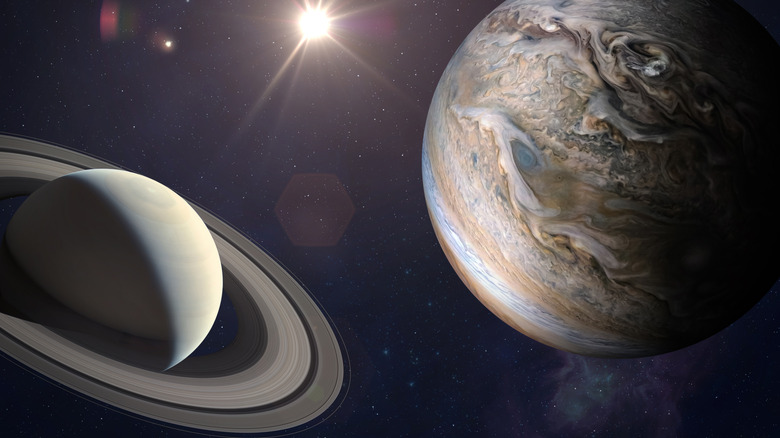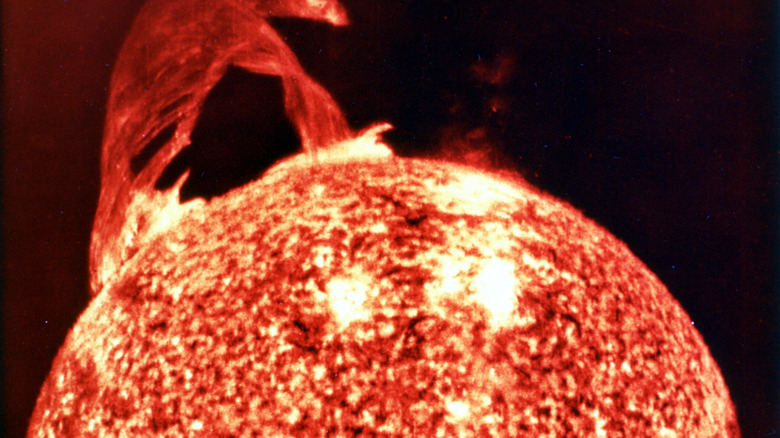The Reason Some People Thought The World Was Going To End In 1982
People have been announcing the imminent end of the world seemingly for as long as the world has been around, and yet the Earth continues to turn, and life goes on. The harbingers of doom often misinterpret Biblical passages or give undue credit to coincidental events in order to reach their conclusions. In 1974, a pair of writers with doctorates in astrophysics and astronomy used their scientific backgrounds and ability to speak confidently and with misplaced authority on upcoming astronomical events to mislead the public and bilk thousands of people into buying their best-selling book "The Jupiter Effect."
As reported by The New York Times, John Gribbin and Stephen Plagemann claimed that come 1982, the world would be in grave danger because the planets would all line up on the same side of the sun, closer to one another than they had been in 179 years. Gribbin and Plagemann theorized that this planetary placement would cause their collective gravity to affect the sun and result in solar flares that would throw out high-energy particles. This release would purportedly lead to disrupting either the Earth's tectonic plates or global wind patterns, leading to destructive earthquakes.
Scientists immediately spoke out against "The Jupiter Effect." In October of 1975, astronomer and meteorologist Jean Meeus tersely shot down the book's claims in an article for the journal Icarus, available via Science Direct. He noted that not only would be planets not "be aligned," their positioning would have no effect on solar activity. In addition, he underlined that the influence of solar flares on the Earth's rotation and earthquakes wasn't proven.
John Gribbin walked back the claims after the book sold well
As reported by the Geophysical Institute at the University of Alaska Fairbanks, in 1974, seismologist Charles Richter of the California Institute of Technology called "The Jupiter Effect" predictions "pure astrology in disguise. In fact, it is very close to pure fantasy." John Gribbin himself started walking back the book's claims in 1980, stating in New Scientist that the theory had been "too clever by half." According to Gribbin, if he and Stephen Plagemann had paid a little more attention to their calculations, they could have predicted the destructive and deadly 1980 eruption of Mount Saint Helen in Washington state. The Geophysical Institute staff noted that they'd received inquiries from the public wondering if they should prepare for catastrophe and sought to reassure worried readers that their fears brought on by reading "The Jupiter Effect" were unfounded.
In March of 1982, United Press International reported that Indian newspaper the Sunday Herald published an article predicting disease, riots, labor unrest, and possibly an earthquake, as well as "a strange epidemic affecting the abdomen will stalk India." Others were acknowledging the so-called Jupiter Effect in more light-hearted manners. The planetarium at Arizona State University planned an "End of the World" party featuring a planetarium show based on the book and refreshments such as rapture punch, fire and sulfur dip, brimstone cookies, and flat Earth cake. Per coordinator Dan Matlaga, the planetarium received a number of calls from frightened people wondering what to expect: "Some people seem to thrive on predictions of calamity and mayhem. The one accompanying 'The Jupiter Effect' seems to have a lot of followers."

